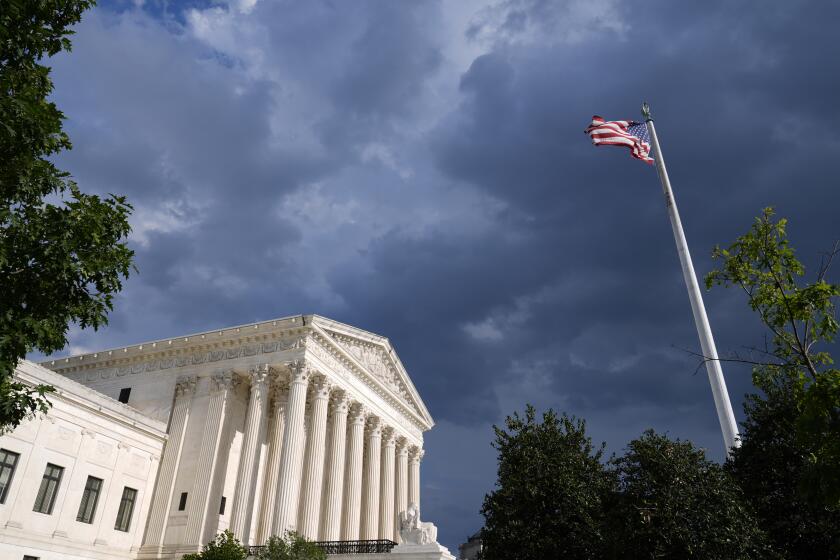New Mexico angling to become home of New Deal art museum
- Share via
ALBUQUERQUE, N.M. — An effort is underway in New Mexico to build support for establishing a national museum dedicated to the New Deal, the Great Depression-era series of work programs and art initiatives aimed at pulling America from destitution more than 80 years ago.
Supporters say New Mexico would be an ideal home for such an institution as the state received one of the largest amounts of money per capita from the programs, resulting in new schools, post offices, visitor centers and art.
A few months after the Franklin D. Roosevelt administration started the Public Works of Art Project, more than 3,700 artists were hired and thousands of murals, paintings, crafts and sculptures were created for government buildings around the country.
An army of workers built up the national parks and community roads and water systems while musicians preserved folk music and photographers documented life in America.
The results include images from photographers Dorothea Lange and Russell Lee, early paintings by abstract expressionist Jackson Pollock, and a look at pueblo life in New Mexico by Native American artist Pablita Velarde.
“It was an incredibly productive time in our history in terms of arts and culture. This would be a tremendous economic boost to not only Santa Fe but also New Mexico,” said state Rep. Matthew McQueen, a Democrat and supporter of the effort.
Kathy Flynn, executive director of the National New Deal Preservation Association, said many examples of the work done during the era can be found around New Mexico.
She recounted for lawmakers the poverty and joblessness that had spread across the country by the mid-1930s, saying half of New Mexico’s population at the time was considered destitute and the devastating dust storms that swept across the plains made life even harder in eastern New Mexico, where she grew up.
“This government program put everybody to work,” said Flynn, 82. “Most of you sitting here probably had a family member that was involved.”
The memorial pending in the state House of Representatives requests New Mexico’s congressional delegates investigate the possibility of establishing a national New Deal art museum in Santa Fe.
The proposal sailed through its first committee and has the support of House Speaker Brian Egolf and Senate Majority Leader Peter Wirth, whose grandfather John Gaw Meem was a well-known architect who designed many New Deal projects. Egolf and Wirth are Democrats.
The memorial suggests the museum could be located in a landmark building on Santa Fe’s Museum Hill. The building was constructed by the Civilian Conservation Corps during the 1930s and for decades has housed National Park Service offices. It’s currently undergoing a renovation.
Curating such a museum would likely be a monumental task, and supporters of the New Mexico effort acknowledge the legislative memorial is a first small step in bringing the idea to light.
The Smithsonian has what it describes as an unparalleled collection of artwork created for the Public Works of Art Project. It drew on that collection to put together an exhibition a decade ago that celebrated the 75th anniversary of the project.
There also are reams of material archived by the Library of Congress, including hundreds of the posters created by the Work Projects Administration. The National Gallery of Art also has watercolor renderings from the era and Roosevelt’s Presidential Library and Museum highlight the New Deal as part of his legacy, but there’s no museum specifically dedicated to the period’s artwork.
At the University of California, Berkeley, efforts have been ongoing to create a virtual museum of sorts to catalogue all the New Deal projects and artwork that can be found around the country.
Flynn pointed to murals at Eastern New Mexico University and New Mexico Highlands University, saying preservation efforts of sites around the country could be boosted if a national museum were to be created.
“There are just so many stories,” she said. “It affected everybody’s family for the most part during that time and there are connections we can still make today.”
Copyright 2019 The Associated Press. All rights reserved. This material may not be published, broadcast, rewritten or redistributed.
More to Read
Sign up for Essential California
The most important California stories and recommendations in your inbox every morning.
You may occasionally receive promotional content from the Los Angeles Times.













